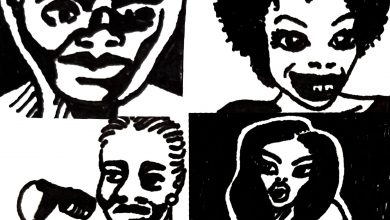Feminism 101: What is Toxic Masculinity?

Illustration by Maddy Pease.
Deeply embedded in the patriarchy are the socially constructed norms that define masculinity; think physically strong, unsentimental, and assertive. These descriptions make up the traditional image of men and define the term “toxic masculinity.”
Toxic masculinity refers to society’s expectations of how a traditional male should behave. Ideas related to toxic masculinity have been normalized in society; comments like, “be a man,” “that’s girly,” and “man up” stem from this attitude.
It is important to underline that toxic masculinity relates to the cultural perspective given to masculinity, not the biological traits of the male gender. It is founded upon societal norms that frame cisgender men as the domineering gender, creating harmful stereotypes that incite violence and sexism across cultures. In addition, toxic masculinity disregards non-conforming genders, and imposes gender binarism, the belief that only two genders exist.
Toxic masculinity enforces the societal ideology that males must attain control in relationships, the household, and in most public situations. This attitude promotes aversion towards expressing emotions that would be deemed as feminine for fear of emasculation. This is directly linked to the misogynistic mentality that male qualities are superior to feminine qualities.
Toxic masculinity exists throughout cultures, expressing itself in different manners. In Latinx culture, toxic masculinity comes in the form of Machismo. Machismo refers to the societal belief that males must adhere to traditionally masculine stereotypes and maintain dominance over women. Given the place of men of color relative to white males in the United States’ social hierarchy, there is an added pressure to act hypermasculine so as to gain the dominance they feel they lack in society. Because men of color do not often have the same opportunities as white males, such as job prospects, they feel they lack control and must make up for this perceived loss of masculinity through exaggerated stereotypical masculine behavior.
Machismo leads to homophobia, sexual harassment and murder, as violence becomes a channel through which to acquire control. Violence stems from an inability to show emotions through any other way, since showing sadness through healthy forms like crying is looked down upon as aligning with traditional feminine sentiment. In Latin American countries, machismo has led to increased rates of femicide and rape. Violence combined with the hierarchical belief that masculinity is superior to femininity normalizes the murder and degradation of women.
Toxic masculinity seeps through everyday life, yet is often excused as normal behavior, or “locker-room talk,” as we have seen during the recent presidential election. Society uses the popular belief that “boys will be boys” to disregard, or deny, the existence of toxic masculinity. However, comments that reinforce the social hierarchy by placing traditional masculinity above femininity cannot be ignored. The normalization of this rhetoric underpins the continuing existence of toxic masculinity.
The bottom line is toxic masculinity harms all genders. It promotes sexism, misogyny, violence, and rape culture, while enforcing dangerous stereotypes of masculinity and femininity. It is a fundamental pillar in the patriarchy and its normalization throughout cultures demands action. Next time you hear comments that promote toxic masculinity, remember to call them out; taking actions to disband this mentality are necessary in order to dismantle the patriarchal structure.




